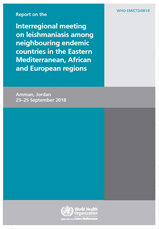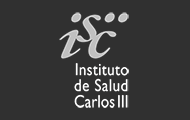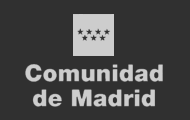Technical reports
|
| World Health Organization |
April 2019
|
| An interregional meeting on leishmaniasis among neighbouring endemic countries in the Eastern Mediterranean, African and European regions was organized by the World Health Organization (WHO) Regional Office for the Eastern Mediterranean in Amman, Jordan, from 23 to 25 September 2018. The meeting was attended by representatives from the health ministries of Albania, Georgia, Greece, Iran (Islamic Republic of), Iraq, Jordan, Lebanon, Morocco, Pakistan, Saudi Arabia, Sudan, Syrian Arab Republic and Tunisia. Representatives from Afghanistan, Algeria and Libya were unable to attend. The Secretariat comprised staff from WHO headquarters, WHO regional offices in the Eastern Mediterranean, Africa and Europe, WHO country offices in Iraq, Pakistan, Syrian Arab Republic and Yemen, and WHO temporary advisors from Spain and Tunisia. |
| Link |
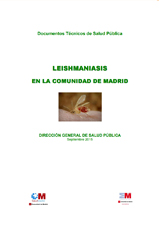
|
| Comunidad de Madrid |
September 2015
|
| La leishmaniasis es una zoonosis endémica y desde 2009 se está produciendo un brote comunitario en la zona noroeste de la Comunidad de Madrid. En este documento se describe la situación epidemiológica de la enfermedad en la Comunidad de Madrid y las medidas de prevención y control que se utilizan. En las medidas participan las Subdirecciones de Sanidad Ambiental, de Recursos Agrarios y de Promoción de la Salud y Prevención. La información aportada en este documento contribuye a facilitar el manejo de la enfermedad por los profesionales asistenciales. |
| Link |
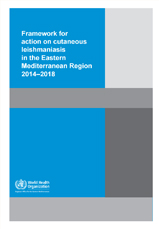
|
| World Health Organization |
Mach 4th, 2014
|
The Framework for action on cutaneous leishmaniasis in the Eastern Mediterranean Region 2014–2018 aims to support the efforts that countries are making to decrease the impact of this disease on their population’s health.
The framework sets five regional targets on surveillance, case management, prevention, capacity-building and research, aimed at reducing the disease burden. It addresses how to respond to the need for cutaneous leishmaniasis control and formulates an action plan to make operational the principles and major areas of intervention.
A set of indicators and forms offers a standardized tool to assist in reporting and data analysis, thus facilitating comparison between countries of the results obtained in different endemic areas and learning from each other. |
| Link |
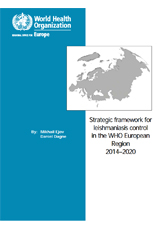
|
| World Health Organization |
February 24th, 2014
|
| Leishmaniasis is a neglected and poorly reported disease with an underestimated or undetermined burden in most countries of the WHO European Region. This strategic framework for leishmaniasis control was developed in close collaboration with all stakeholders in order to improve the surveillance, control and prevention of leishmaniasis. The framework outlines the regional goal and objectives to be achieved by 2020 together with the recommended strategic approaches and priority interventions, with special attention to programme management, case detection and management, disease surveillance, control of reservoir hosts, integrated vector control, environmental operational research, capacity building, community participation and health education, cross-border cooperation, intersectoral collaboration, partnership action and monitoring and evaluation. |
| Link |
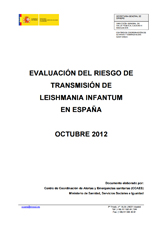
|
| Ministerio de Sanidad, Servicios Sociales e Igualdad |
October 2012
|
Se analizan los sistemas de vigilancia de la leishmaniasis en España y se realiza una evaluación para revisar los factores de riesgo que pueden condicionar un aumento en la incidencia de esta enfermedad y reforzar, si fuera necesario, el modo de vigilancia y las medidas de prevención y control que podrían ser utilizadas para reducir el riesgo.
Se revisa la información registrada en el Conjunto Mínimo Básico de Datos, que recoge información de casos hospitalizados, observando que en todas las Comunidades Autónomas atienden casos de leishmaniasis. Este hecho apoyaría que la enfermedad está distribuida por todo el territorio, a diferencia de lo establecido en el RD 1995 (que establece que sólo notificaran aquellas CCAA en las que la enfermedad sea endémica).
|
| Link |
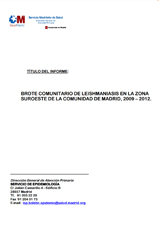
|
| Comunidad de Madrid |
April 2012
|
| Desde 2009 se está produciendo un brote comunitario en la zona noroeste de la Comunidad de Madrid, con un máximo de casos en 2011, con un descenso en los años posteriores. Se ha investigando la presencia de otra fauna y se ha encontrado que las liebres y los conejos juegan un papel como reservorios secundarios activos. Se continúa realizando una vigilancia epidemiológica activa de la enfermedad y numerosas actuaciones ambientales dirigidas a la investigación y control del reservorio y del vector, entre las que destacan la identificación de zonas de riesgo, la aplicación de medidas de saneamiento ambiental (limpieza y desinsectaciones) y el control de superpoblaciones de lepóridos. En las medidas de control participan numerosas instituciones sanitarias y medioambientales. |
| Link |
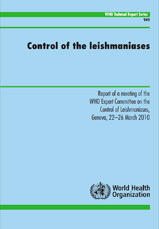
|
| World Health Organization |
March 2010
|
| This revised and updated edition includes new therapeutic recommendations for visceral and cutaneous leishmaniasis, recommendations on the use of rapid diagnostic tests, details on the anagement of Leishmania–HIV coinfection and consideration of social factors and climate change as risk factors for increased spread. Recommendations for research include the furtherance of epidemiological knowledge of the disease and clinical studies to address the lack of an evidence-based therapeutic regimen for cutaneous and mucocutaneous leishmaniases and post-kala-azar dermal leishmaniasis (PKDL). |
| Link |
